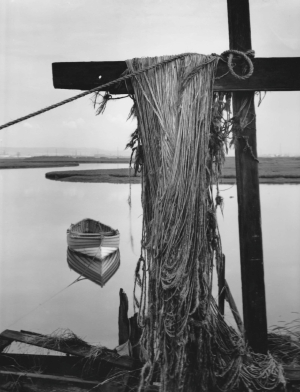
'Fixing Time': Photographs by Ian Macdonald
Above image: Salmon Net Drying Rack, 1973. This photograph and all the others in this review are courtesy of the artist.
Fixing Time is the title of a comprehensive exhibition of 50 years’ work by Ian Macdonald, the North-East photographer and artist. It takes place across two venues, the Northern Gallery for Contemporary Art in Sunderland until 3rd November 2024, and Sunderland Museum and Winter Gardens until 4th January 2025.
Macdonald’s extensive body of work is dedicated to documenting working-class life, and the rise and fall of heavy industry in the North-East in the last decades of the 20th century. This has been, of course, a period marked by massive deindustrialization, accompanied by political shifts and social upheaval, including the recent disturbances on the streets of Sunderland. The two exhibitions cover a wide range of themes, including People, Towns and Portraits; Greatham Creek, Teeside; Smith’s Dock Shipyard; Redcar Blast Furnace; and School Portraits.
Some detailed large-scale drawings are also included in the exhibition, showing the importance of Macdonald's training as an artist and draughtsman in the evolution of his distinctive, craftsmanlike photographic practice. Technically, this is based on careful composition, making balanced images using large format camera equipment, black-and-white film, and traditional, painstaking print-making techniques.

Canteen staff catching up on the day at the end of their shift, Redcar Blast furnace, Autumn 1983
Artistically, the compositions show not only an awareness of ‘fixing time’ in the sense of capturing the moment (see ‘Canteen staff’ above) but of capturing different times, using light and spatial relationships to convey meaning.

Cote Hill Island, Greatham Creek
In Cote Hill Island, for example, see how the future, evoked through the broodingly dark sky, the high tide and the horizon of modern industry, threatens to inundate and overwhelm the island of life in the present.
The warmth of Macdonald’s relationship to his subjects also shines through many of the photographs, particularly the series of individual portraits taken at a school, but also in photographs of working people at leisure and at work.
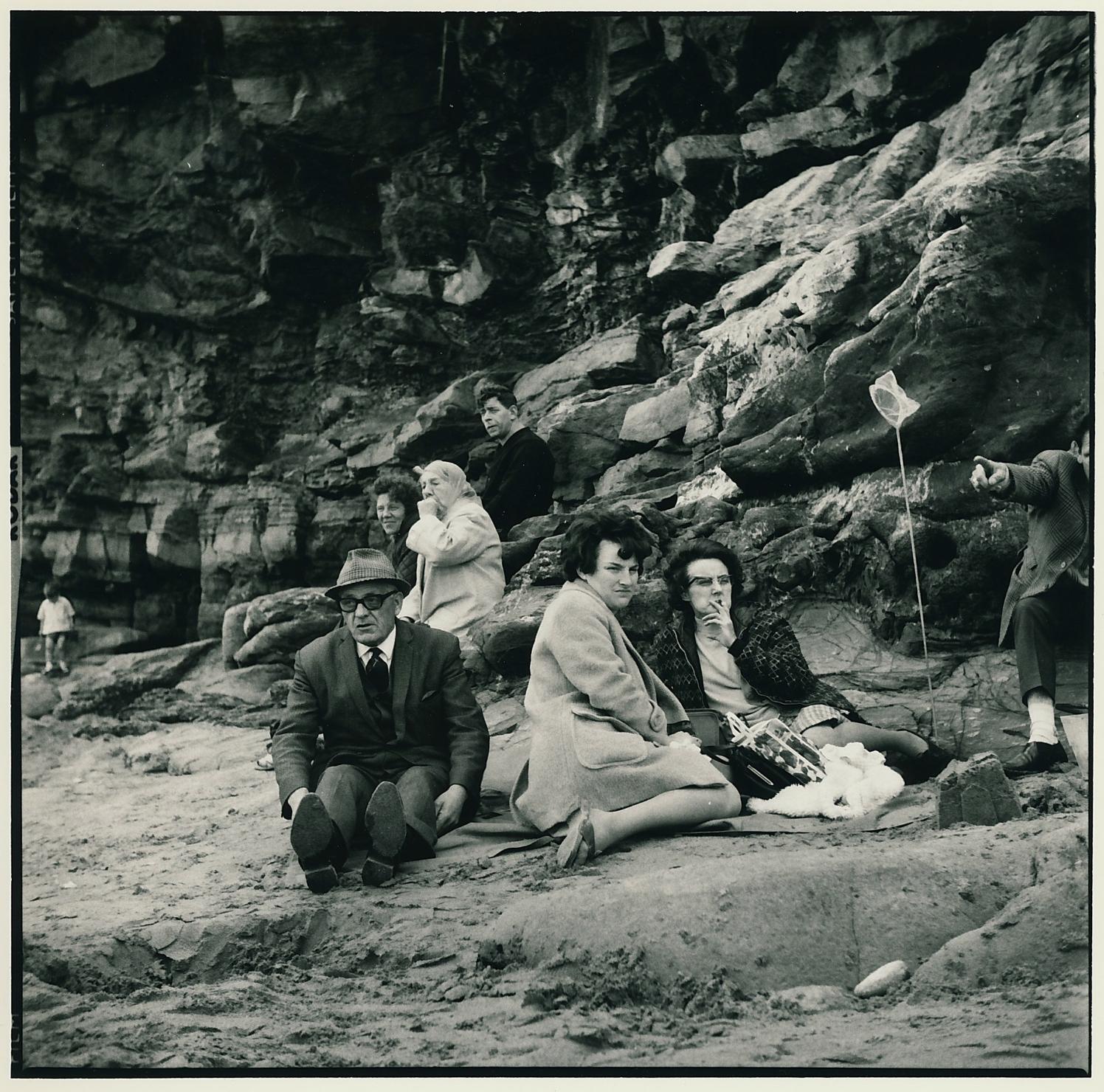
Easter Monday, Whitby 1970
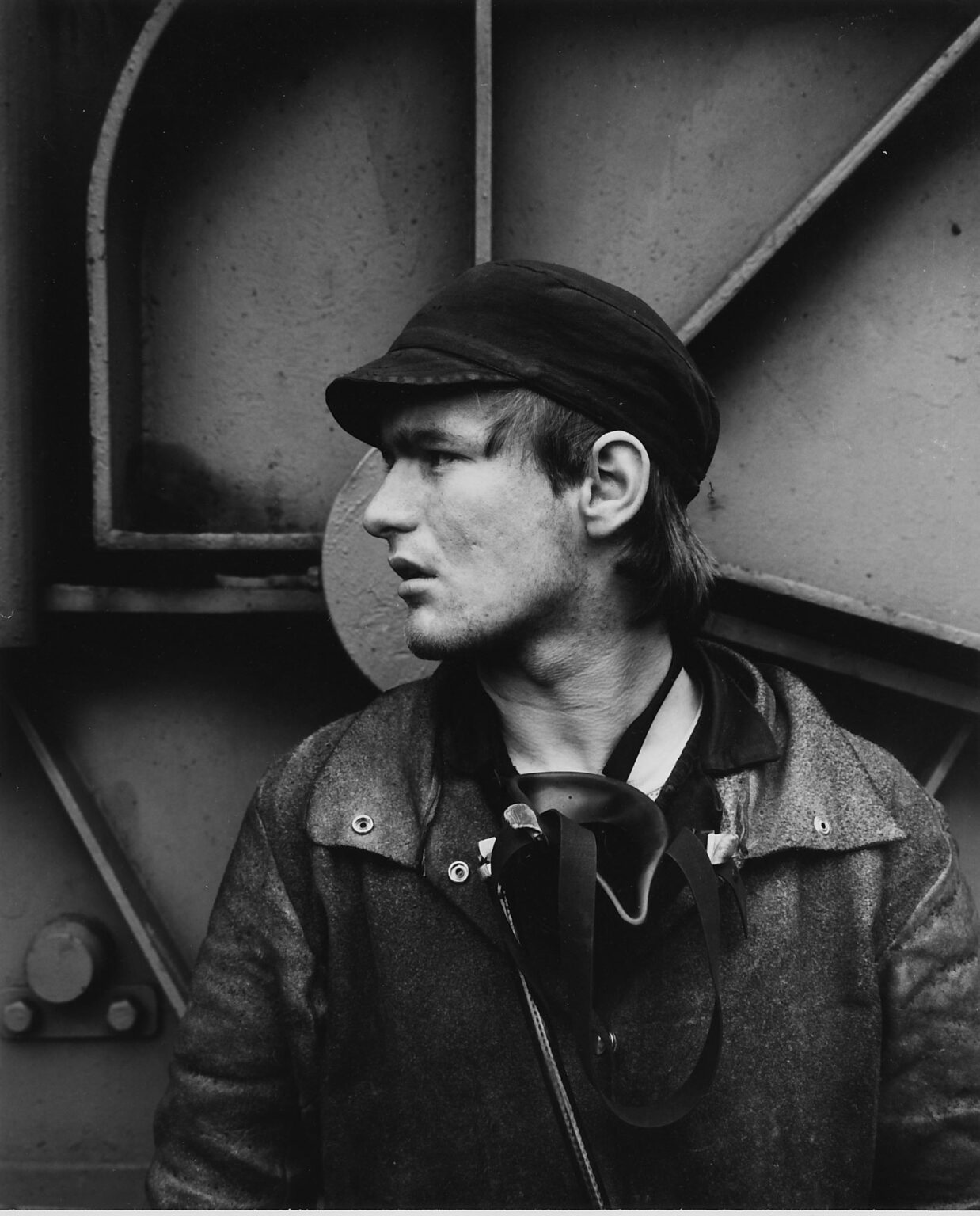
Burner, Mark Dewse, standing by a 40 ton crane, Smith’s Dock Shipyard, 1986
The appreciation and warmth of Macdonald’s approach extends to places as well as people...
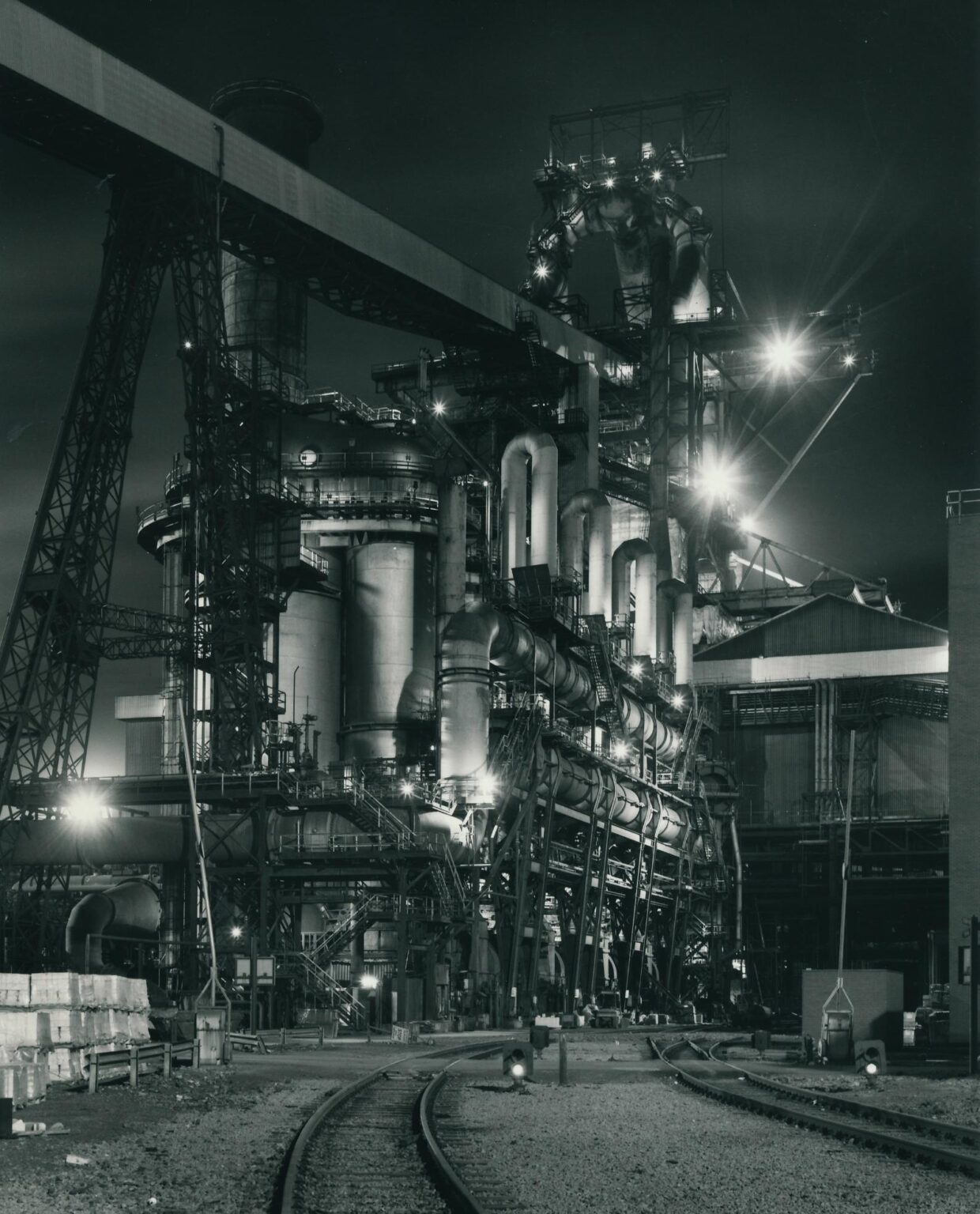
Redcar Blast furnace, 2am, Midsummer night 1986
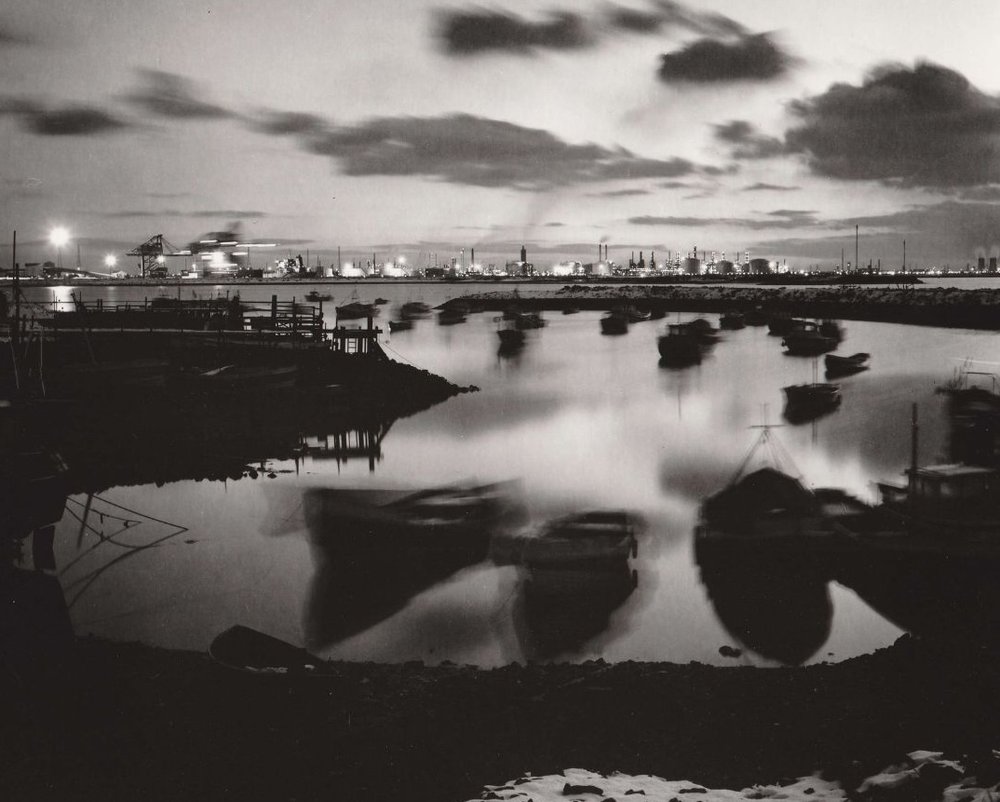
Paddy’s Hole at the South Gare, Teesmouth, at dusk
Although the photographs have clear documentary value, many of them transcend the particular time and space they are ‘fixed’ in. Some of them have much deeper, timeless meanings. For example, this photograph, which positions a family using dramatic diagonal composition against the hugeness of the sea – the vast, unknowable future? The world around them, full of beauty and danger? It’s a poetic, mythic image which both stimulates the imagination and generates calmness.
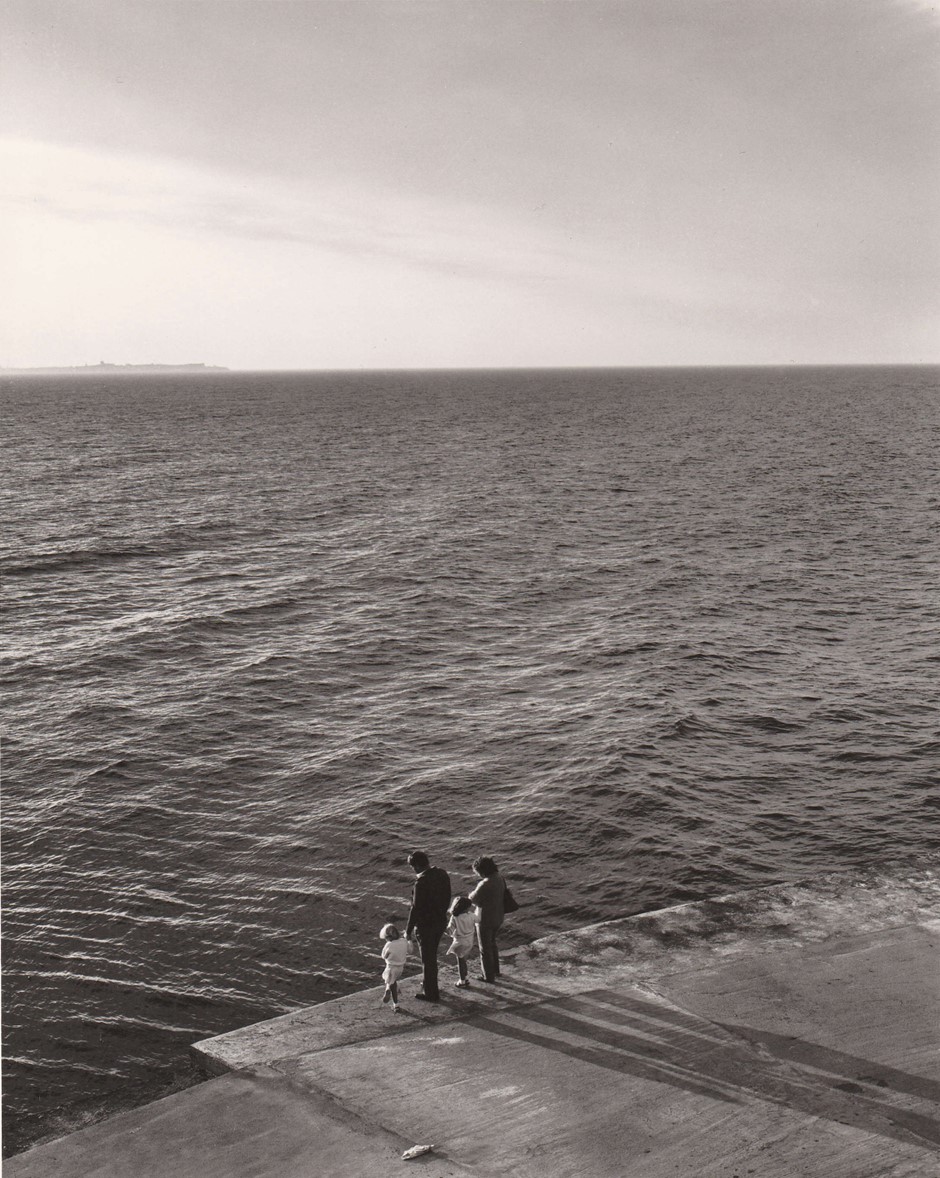
Family standing on the edge of South Gare on a summer’s evening looking across Tees Bay towards Hartlepool
Similarly, this beautiful image of a salmon drying net and boat, stimulates imaginative association with the Cross of Christ, and thus associates his suffering with the suffering of working fishermen:

Salmon drying net rack at Greatham Creek, 1973
So it is a subtle and complex body of work that is on exhibition. It certainly documents the essential truths about working-class life and communities in the North-East over the last 50 years – the heyday of heavy industry and its sad decline – but it goes much further than that.
The aesthetic beauty of the images – their deep blacks, clear shining lights and balanced, lively compositions – together with the empathy and warmth of Macdonald’s perspective, draw the viewer into the photographs. They kindle our own memories and cause all kinds of ideas, emotions and relationships to be shared. Nostalgia and a sense of wonder and loss are evoked, but there is also a glimpse of some deeper truths which transcend the particular time and place of the photographs.
Fixing Time at the NGCA runs until the 3rd November 2024, and at Sunderland Museum and Winter Gardens until 4th January 2025. While visiting the NGCA, you can also catch Jeremy Deller’s best known work Battle of Orgreave, a re-enactment of 1984 Miners' Strike filmed by Mike Figgis, which is on display to mark the event’s 40th anniversary.
